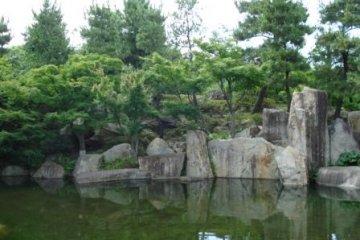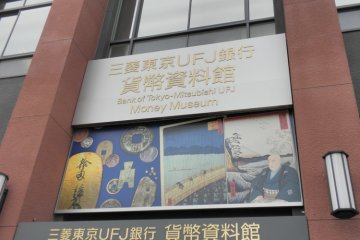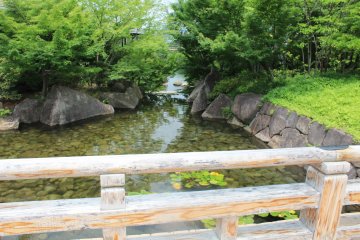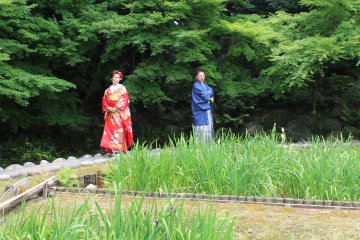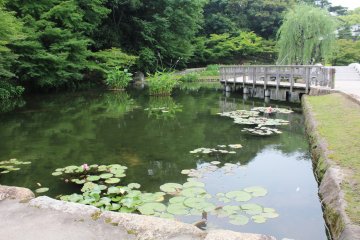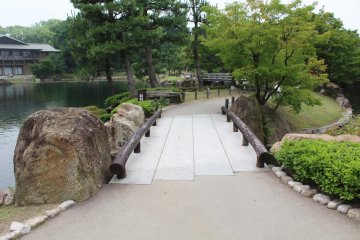I really enjoyed walking around Tokugawa Garden, and especially enjoyed the Art Museum. When you visit a large amount of parks and gardens, sometimes it is hard to be pleased with what you see. I was easily pleased here though, with graceful pathways circling a beautiful pond filled with the most unique and colorful koi carp I have ever seen.
It is a garden that you wish you could have as your own, scenic beauty that radiates calm and peaceful feelings. It is exceptionally well maintained and the paths and bridges are refreshingly clean. This cleanliness has an effect on those who walk the paths and bridges, ascending throughout the soul and purifying the spirit.
The attractive spot is popular amongst newly-wed couples, who use the garden as a backdrop for heavenly pictures to provide sweet memories of their special day. If you are lucky enough to witness these particular scenes, you get a wonderful vision of Japanese culture and romance.
Next to the garden is the Art Museum, which unfortunately you are not able to take photos in. Inside are swords, armor, arrows and other symbols of the warrior. There is a reconstruction of the Suramen Tea House from the Ninomaru residence in Nagoya Castle. Another room hosts the formal chamber of a daimyo's residence while another displays objects from Noh theater with a replica stage. The stage has a beautiful large bonsai-like tree painted on the walls and shows costumes that would be worn for Noh performances. The taste you get for this kind of Japanese history is immense and you can really imagine such scenes taking hand with everything around you acting as a porthole into this incredible period of time.
The Objects and Furnishings of Elegant Living display is sensational. During the Tokugawa period, for a warrior elite, a cultured and artistic education was said to rank along with military skills as peace continued in this generation. The craftsmanship reflected the power and influence of its owners. After being blown away with such intricacy, The flowering of the Courtly Tradition provides further insight into the past of Japan.
Entry to the museum costs ¥1200, but along with the garden it is ¥1350 (entry to the garden alone costs ¥300) and it is totally worth visiting both. Together they provide a glimpse into the past beauty of Japan and offers a wonderful reflection of the present. The museum is open from 10am - 5pm, whereas the garden is open from 9am to 5:30pm. Both are closed on Mondays. The nearest station is Ozone Station.




